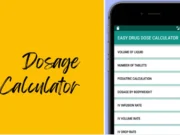What is a Scientific Notation Converter?
A Scientific Notation Converter is a tool that allows users to convert numbers between standard decimal form and scientific notation. Scientific notation expresses numbers as a coefficient (the significand) multiplied by a power of ten, facilitating easier handling of very large or small values. This converter is particularly useful in scientific and engineering fields, where precise calculations are essential. Users simply input a number and receive its equivalent in scientific notation and decimal notation, enhancing understanding and efficiency in mathematical operations.
How to Use the Scientific Notation Converter?
To use the Scientific Notation Converter, input a number in the designated box and click the "Convert" button. The tool will automatically convert the input into scientific notation, displaying the results in a clear format. The formula for scientific notation is m × 10n, where m is the significand and n is the exponent. After conversion, the results will appear in a table format along with a clear step-by-step solution. If you want to start over, click the "Clear" button to reset the inputs.
Input Number:
Results:
| Formula | Result |
|---|---|
Scientific Notation:
Decimal Notation:
Method of Solution:
FAQ
1. What is the purpose of scientific notation?
Scientific notation simplifies the representation of very large or small numbers, making calculations easier and more manageable. It helps in comparing values efficiently in scientific and engineering contexts.
2. How do I convert a number to scientific notation?
To convert a number to scientific notation, identify the significand by placing the decimal point to get a number between 1 and 10. Count the number of places moved to determine the exponent of 10.
3. What is the significance of the exponent in scientific notation?
The exponent indicates how many places the decimal point has been moved. A positive exponent represents a large number, while a negative exponent represents a small number, guiding the scale of the value represented.
4. How do you express small numbers in scientific notation?
Small numbers are expressed in scientific notation by ensuring the significand is between 1 and 10, with a negative exponent to indicate the position of the decimal point to the left of the significand.
5. Can scientific notation be used for negative numbers?
Yes, scientific notation can represent negative numbers by simply placing the negative sign in front of the significand. The exponent remains the same regardless of the sign of the number.
6. Why is scientific notation important in science?
Scientific notation is crucial for accurately representing measurements, calculations, and data analysis involving extremely large or small quantities, thus enhancing clarity and reducing errors in communication.
7. What are common mistakes when using scientific notation?
Common mistakes include misplacing the decimal point, incorrectly counting the exponent, and misunderstanding how to express numbers that are less than one. These errors can lead to significant inaccuracies in calculations.
8. How can I practice converting to scientific notation?
Practice converting to scientific notation by working with a variety of numbers, including both large and small values. Online exercises and calculators can provide additional practice opportunities for improving your skills.
9. What is E-notation, and how is it related to scientific notation?
E-notation is a shorthand form of scientific notation commonly used in computing. It uses the letter "E" followed by the exponent to denote powers of ten, for example, 1.23E+3, which is equivalent to 1.23 × 10³.
10. How does scientific notation relate to significant figures?
Scientific notation directly relates to significant figures, as it emphasizes the precision of the number represented. The significand in scientific notation shows how many significant figures are present in the original number.
11. Is there a limit to how large or small numbers can be in scientific notation?
While there is no strict limit to the size of numbers in scientific notation, practical constraints are determined by the context, such as computational limits in software or hardware used for calculations.
12. Can I use scientific notation in everyday life?
Yes, scientific notation can be useful in everyday life for understanding large distances, scientific data, or financial figures that involve large or small quantities, providing clarity and simplicity in communication.
Related Calculator-












